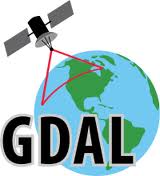-
-
products
-
resources
-
support
-
company
-
Login
-
.nitf File Extension
Developer: U.S. Department of DefenseFile type: Imagery FileYou're here because you have a file that has a file extension ending in .nitf. Files with the file extension .nitf can only be launched by certain applications. It's possible that .nitf files are data files rather than documents or media, which means they're not meant to be viewed at all.what is a .nitf file?
The NITF file extension is known as the National Imagery Transmission Format File which was developed by U.S. Department of Defense. The NITF format is an imaging data format which contains a combination of text, graphics, and metadata in a single file. It is used by the U.S. government and military for transmitting documents. It is also used for satellite and aerial photos. It is used together with the NATO Secondary Imagery Format (NSIF) for storing and transmitting government data. It has adopted the ISO/IEC 15444-1 standard for imagery compression, JPEG 2000. It uses the FME formatting method that handles color, grayscale images and numerical data. Files in NITF format can be opened with XnView and Geospatial Data Abstraction Library in Microsoft Windows, Mac OS and Linux platforms. There are three versions of NITF : NITF 1.0, NITF 2.0 and NITF 2.1. The version one included image only format, while second version was a more improved format.how to open a .nitf file?
Launch a .nitf file, or any other file on your PC, by double-clicking it. If your file associations are set up correctly, the application that's meant to open your .nitf file will open it. It's possible you may need to download or purchase the correct application. It's also possible that you have the correct application on your PC, but .nitf files aren't yet associated with it. In this case, when you try to open a .nitf file, you can tell Windows which application is the correct one for that file. From then on, opening a .nitf file will open the correct application. Click here to fix .nitf file association errorsapplications that open a .nitf file
 XnView
XnViewXnView
Considered as image viewer software, XnView allows users to manage data and tools for various applications. It is designed for photo and video viewing, converting, or sharing, as well as data creation like contact sheet, slideshow and pages for HTML. This product supports a variety of file formats from 400 readable images to 50 writable images, which are mostly standard such as PNG, JPEG and TIFF for photos, plus WAV, MP3 and WMA for audios, and MPEG for video. Other tools integrated include adjustment or editing of photos through filters, effects, color enhancement, size reduction, and rotation. With this program, audio and video files are available for ripping or burning to CDs and DVD too, but Nero Burning ROM is needed so that must be installed on the same computer you are using. Versions of this software are XnView MP, XnConvert, XnView Photo Fx, XnView Retro, XnView Sketch, XnView Pocket, and XnView Deluxe. fCoder Group Image Converter Plus
fCoder Group Image Converter PlusfCoder Group Image Converter Plus
Webshots Picture File or WB1 files are raster image files created by Webshots Desktop. This file contains a proprietary format of an image meant for access by Webshots. To run WB1 files, you can use applications like XnView or Ultimate Webshots Converter for Mac and Linux, Ultimate Webshots Converter, XnView, AG Interactive Webshots Desktop or fCoder Group Image Converter Plus for Windows. Image Converter Plus is a software that can convert image files to other image formats, being able to recognize at least 260 image files and more than 800 format dialects. You can resize your images singly or by folders. You can right click on the images to select and apply the operation that you want. A context menu is also provided to perform these functions. You can share your images quickly by uploading the images to Web albums and sending them by email, Picasa, FTP, Dropbox, Live Mesh or LAN. Before uploading, you can also add watermark to your images. GDAL
GDALGDAL
GDAL [Geospatial Data Abstraction Library] is a translator library for geospatial raster data files distributed under X/MIT as a free software by the Open Source Geospatial Foundation. It utilizes single abstract data model for all formats. It has command line utilities for data processing and translation. It was originally developed by Frank Warmerdam until it was officially turned over to the Open Source Geospatial Foundation. The OGR library is also part of GDAL source tree. GDAL/OGR has become a freeware because of its extensive data exchange capabilities and due to its widespread comprehensive functions. It provides support for more than 120 geospatial raster formats.FWTools SuiteFWTools Suite
FWTools is a suite of free GIS binary kit for Linux and Windows. The kits are intended for easy installation by end users. FWTools includes GDAL, MapServer, OpenEV, OGDI and PROJ.4 with some supporting elements. FWTools also aims to keep track of the development versions of packages included in the program rather than the official release versions. This will allow the developer, FW, the means to create bug solutions for a wider audience than would be covered and provided from the source. FWTools also supports JPEG2000, ECW, HDF and other formats requiring extra libraries. FWTools for Linux are designed to be agnostic to packaging and distribution system, making it compatible with any Linux system released in the last few years. Its subpackages are MapServer [a device for Web mapping], PROJ.4 [cartographic projections library provided with command line utilities], GDAL/OGR [a set and library of reading and writing command utilities of geospatial vector (OGR) and raster (GDAL) formats], OpenEV [analysis tool and data viewer for raster/vector desktop], OGDI [multi-format vector and raster reading technology that supports military formats like RPF [CIB, CADRG], VPF [VITD, VMAP] and ADRG and Python scripting language.a word of warning
Be careful not to rename the extension on .nitf files, or any other files. This will not change the file type. Only special conversion software can change a file from one file type to another.what is a file extension?
A file extension is the set of three or four characters at the end of a filename; in this case, .nitf. File extensions tell you what type of file it is, and tell Windows what programs can open it. Windows often associates a default program to each file extension, so that when you double-click the file, the program launches automatically. When that program is no longer on your PC, you can sometimes get an error when you try to open the associated file.leave a comment
Fix .nitf File Extension now
Find and repair file association errors preventing this file type from opening on your computer.Start Fix Now Install Registry Reviver®Related Data Files
.cxt Director Protected Cast File
.folx Folx Download File
.ttk Catalyst Translation Toolkit File
.sbt SuperBase Data Note Files
.galleryco SMART Notebook Gallery Collection File

